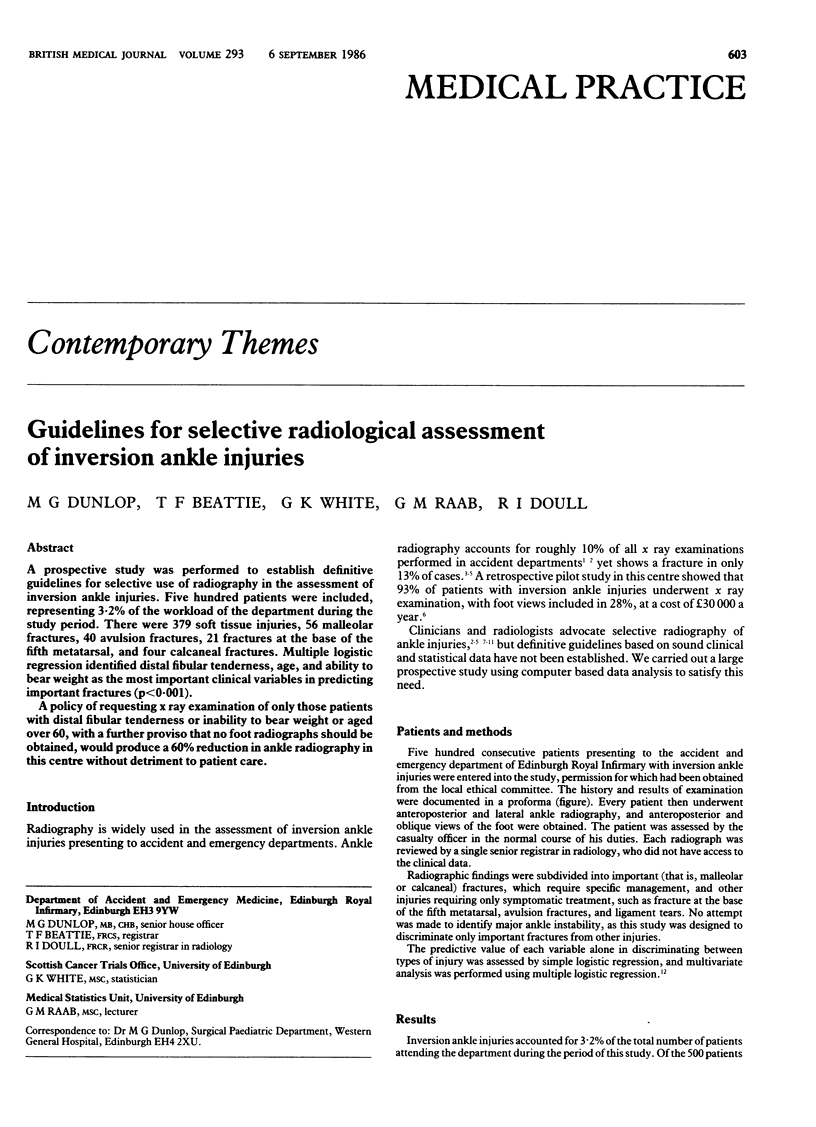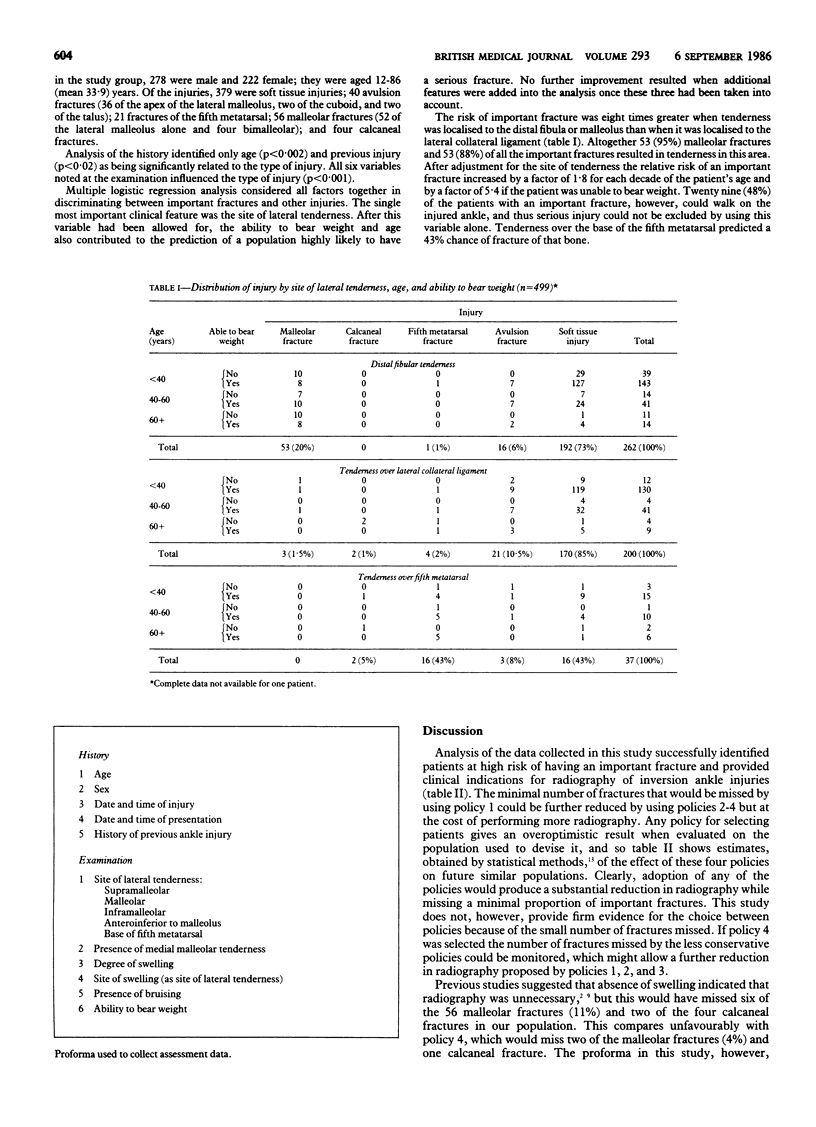Abstract
A prospective study was performed to establish definitive guidelines for selective use of radiography in the assessment of inversion ankle injuries. Five hundred patients were included, representing 3.2% of the workload of the department during the study period. There were 379 soft tissue injuries, 56 malleolar fractures, 40 avulsion fractures, 21 fractures at the base of the fifth metatarsal, and four calcaneal fractures. Multiple logistic regression identified distal fibular tenderness, age, and ability to bear weight as the most important clinical variables in predicting important fractures (p less than 0.001). A policy of requesting x ray examination of only those patients with distal fibular tenderness or inability to bear weight or aged over 60, with a further proviso that no foot radiographs should be obtained, would produce a 60% reduction in ankle radiography in this centre without detriment to patient care.
Full text
PDF


Selected References
These references are in PubMed. This may not be the complete list of references from this article.
- Brand D. A., Frazier W. H., Kohlhepp W. C., Shea K. M., Hoefer A. M., Ecker M. D., Kornguth P. J., Pais M. J., Light T. R. A protocol for selecting patients with injured extremities who need x-rays. N Engl J Med. 1982 Feb 11;306(6):333–339. doi: 10.1056/NEJM198202113060604. [DOI] [PubMed] [Google Scholar]
- Brooks S. C., Potter B. T., Rainey J. B. Inversion injuries of the ankle: clinical assessment and radiographic review. Br Med J (Clin Res Ed) 1981 Feb 21;282(6264):607–608. doi: 10.1136/bmj.282.6264.607. [DOI] [PMC free article] [PubMed] [Google Scholar]
- Cockshott W. P., Jenkin J. K., Pui M. Limiting the use of routine radiography for acute ankle injuries. Can Med Assoc J. 1983 Jul 15;129(2):129–131. [PMC free article] [PubMed] [Google Scholar]
- GARFIELD J. S. Is radiological examination of the twisted ankle necessary? Lancet. 1960 Nov 26;2(7161):1167–1169. doi: 10.1016/s0140-6736(60)92356-4. [DOI] [PubMed] [Google Scholar]
- Golberg B. Department of inappropriate investigations. Br Med J. 1977 Nov 12;2(6097):1274–1275. doi: 10.1136/bmj.2.6097.1274. [DOI] [PMC free article] [PubMed] [Google Scholar]
- Montague A. P., McQuillan R. F. Clinical assessment of apparently sprained ankle and detection of fracture. Injury. 1985 Sep;16(8):545–546. doi: 10.1016/0020-1383(85)90082-8. [DOI] [PubMed] [Google Scholar]
- Vargish T., Clarke W. R., Young R. A., Jensen A. The ankle injury--indications for the selective use of X-rays. Injury. 1983 May;14(6):507–512. doi: 10.1016/0020-1383(83)90053-0. [DOI] [PubMed] [Google Scholar]
- Warren R. A., Ferguson D. G. Why do accident and emergency doctors request X-rays? Arch Emerg Med. 1984 Sep;1(3):143–150. doi: 10.1136/emj.1.3.143. [DOI] [PMC free article] [PubMed] [Google Scholar]
- de Lacey G., Bradbrooke S. Rationalising requests for x-ray examination of acute ankle injuries. Br Med J. 1979 Jun 16;1(6178):1597–1598. doi: 10.1136/bmj.1.6178.1597. [DOI] [PMC free article] [PubMed] [Google Scholar]


